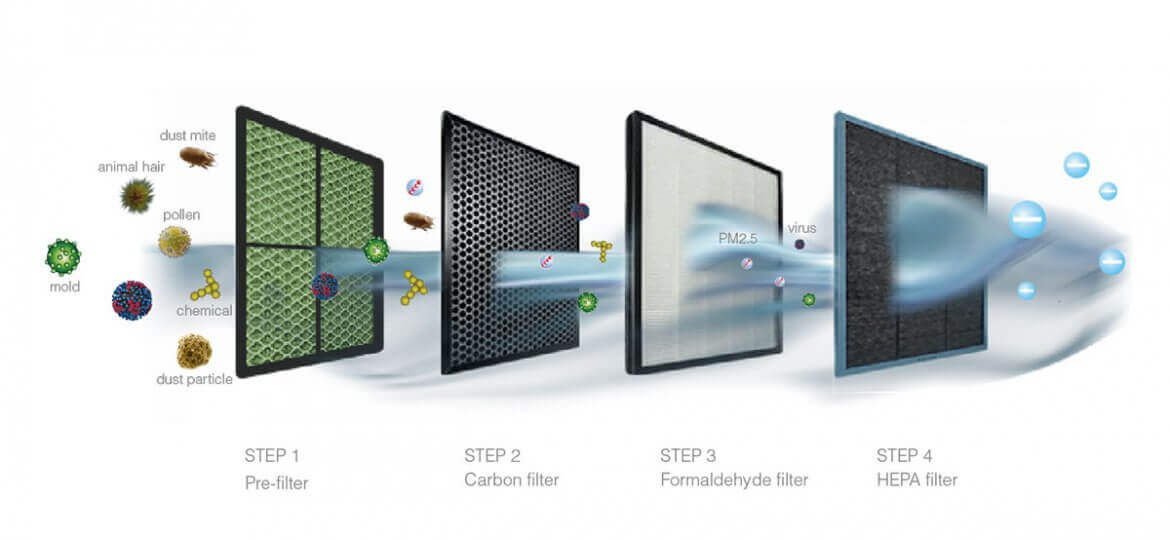How Does an Air Purifier Work?
Air pollution has been a major subject of concern these days. The industrialization, exuded use of vehicles and activities as small as smoking cigarettes are emitting pollutants that are making air harmful for breathing. The protection from air pollution had started from using face masks. The technology has now evolved and effective products like air purifiers are available now.
What do exactly air purifiers do?
Pollutants like smoke, mold spores, pollen, bacteria, viruses and pet dander are detrimental to lungs and immune system. These pollutants are so small that they cannot be detected with naked eyes. They are measured in microns which equals to 1/25,400 inch. Naked eyes cannot see anything smaller than 10 microns. With the increase in such indoor air pollutants, there is a sudden surge in the need for air purifiers at homes. Basically, air purifiers filter the air pollutants and supply fresh or pollutant-free air.
How does an air purifier work?
With growing air pollution and need to use filter air, the use of air purifier is going to increase. Air purifiers utilize sieves that can filter particles from circulating air. As air flows into the air purifier, it traps the particles and sends the fresh air out. Finer the sieve used, smaller the particles it can trap.
HEPA Purifiers –
The benchmark for air purifiers has been set by High-Efficiency Particulate Air (HEPA) purifiers. It is guaranteed to trap 99.97% airborne particles that are larger than 0.3 microns.
HEPA filters tend to use two different mechanisms to clean air. First, there are one or more outer filters that work like sieves to stop the larger particles like dirt, dust or hair to pass through them. Second, there is a concertina with folded papers designed to trap the smaller particles.
Depending on the size of particles, the filtration can happen in four different ways – Inertial impaction, diffusion, interception, or sieving. Larger contaminants are initially trapped by inertial impaction and sieving. The particles collide with each and get trapped or they get trapped while attempting to permeate through the fibers. Medium size particles are grabbed by fibers via inception when they move through filters. Smaller particles vanish as they travel through the filter and eventually collide with a fiber and eventually get trapped.
Activated Carbon Filter/Purifier –
This type of filter purifies air through a chemical reaction. Activated carbon is sold in thin or thick packets of air filtration. It is then inserted into the main purifying device, which is an air purifier or HEPA air filter. Contaminated air enters the filtration system, passes through the active carbon, undergoes absorption and then leaves filter after purification. Activated carbon is often used with HEPA filter to enhance the efficiency of filtration. The activated carbon prevents larger particles to reach HEPA filter. By doing so, it helps HEPA filter to perform better and last longer.
Cold Catalyst Filter –
It works on the concept of absorption. The cold catalyst filters absorb and decompose formaldehyde in the air and tiny floating dust particles. It also helps in the removal of other harmful gases and odor.
The working of air purifier is not very complicated and its operation is user-friendly. However, with such a simple mechanism of operation, it removes the contaminants at the microscopic level. Subsequently, it guarantees fresh air.
The air purifiers of Air Concept, work fundamentally on the same principle. Leveraging its expertise of air filtration from its parent company Filter Concept, these air purifiers are designed with world class technology which ensures clean and fresh air for you and your family. Feel free to get in touch with us to know more about our products or the technology that we use.



